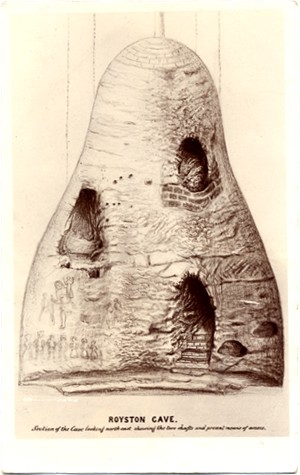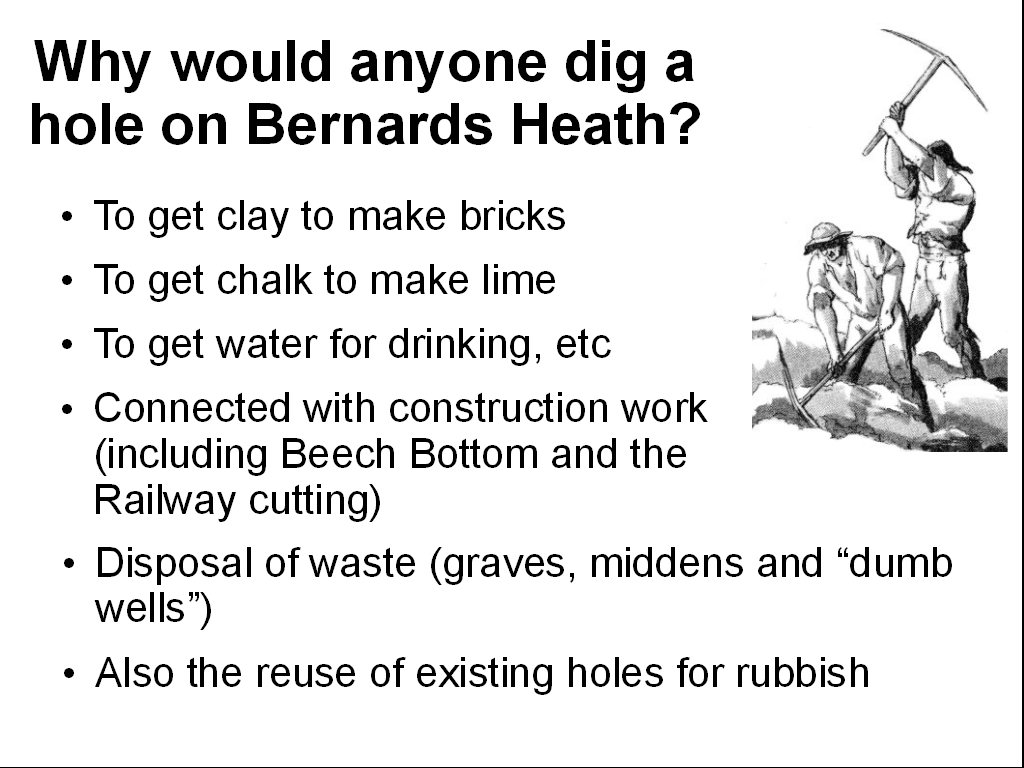|
click on picture for full screen image |
|
|||||||||||
|
Why would anyone dig a hole on Bernards Heath? In places the clay is suitable for making bricks Digging deeper you reach chalk which can be used to make lime (mortar for building) or for agricultural use. In some places softer chalk was also used in the bricks. If you want water you have to dig very deep wells The biggest holes in the area are the Iron Age Beech Bottom, and the Victorian railway cutting but I am ignoring them today. One must not forget that holes are useful for hiding things you don't want - and there were probably many "dumb wells" in the Bernards Heath area. |
||||||||||||
Digging Chalk for Agricultural Use in the area
This topic is not covered in the talk due to lack of time.
The clay with flint covering of the summit of the Chiltern Hills actually means that in many places the top soil is deficient in lime, despite the fact that the underlying rock is chalk. Once this was realised pits were often dug in the fields to get chalk to spread on the land. Such holes could occur anywhere in the clay-topped Chilterns, and not specifically in brick-making areas, The following news item relates to such a chalk pit only a couple of miles from Bernards Heath.
The follow accident at Sandridge, reported in the Herts Guardian of 9th January, 1858, may refer to chalk being dug from a 30 foot deep pit for use on the farm.
Sandridge. — Fatal Accident.— On Thursday morning, about nine o’clock, a large quantity of chalk fell into a chalk pit on the Pound Farm, where a labourer, named James Barker, of Wheathamstead, was employed digging. The pit was about thirty feet deep, and it gave way within about six feet of the mouth. burying the unfortunate man some depth in the soil. Labourers were immediately employed, but it was not until about three o’clock in the afternoon before the body was found, and life was quite extinct. An Inquest was held on the body, before R G Lowe, Esq., at the Queen’s Head, and the Jury returned a verdict of “Accidental Death."
|
Another accident in 1852 - this time associated with a chalk pit at a brickworks, suggests that a shaft about 5 ft in diameter was dug until suitable chalk was reached and then the chalk was removed leaving a chamber maybe 20 feet down from the surface. In plan this would closely resemble Royston Cave, where the bottom chamber is about 25 feet in diameter. It is a man-made cavity which was originally entered through a hole in the roof after its rediscovery in 1742 a stepped passage was dug to give easy access to the chamber. The Royston Cave is of interest because of the religious carvings on the walls but it could have been an ordinary chalk pit which was later used for some secret religious purposes. The reason why it was first excavated, and who were the people who made the carvings is a mystery. Post Card by Robert H. Clark |
 |
| Octoober 2106 | Page Created |


